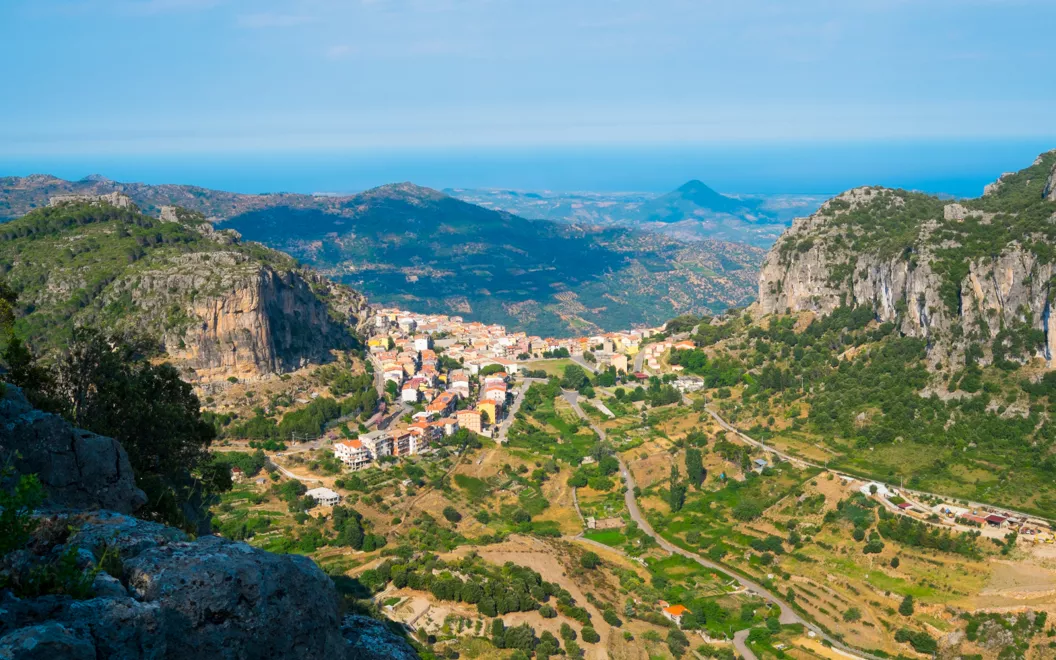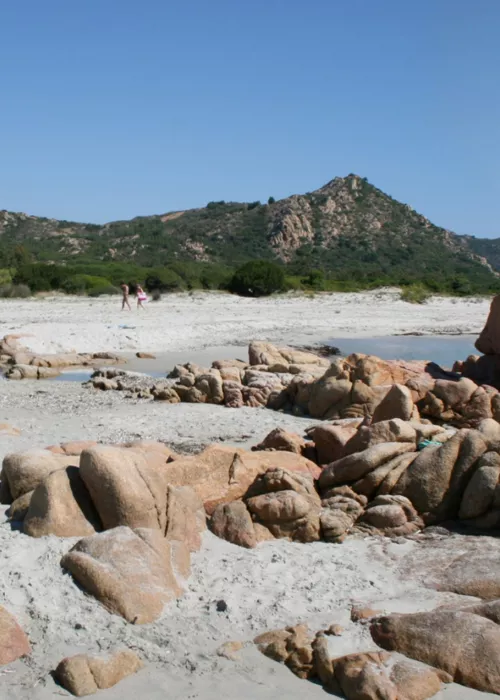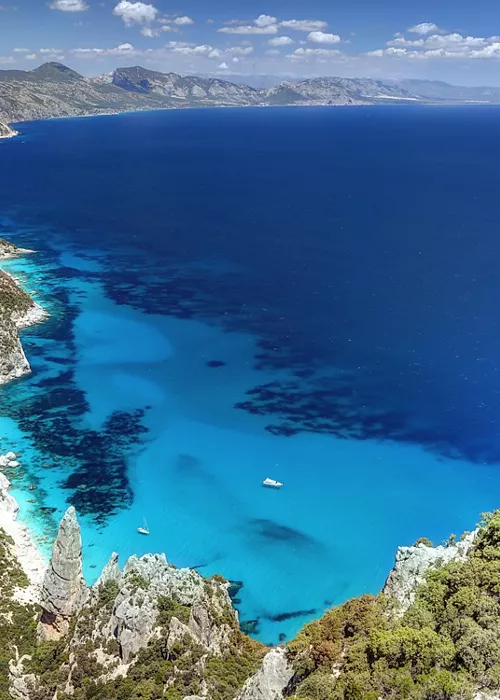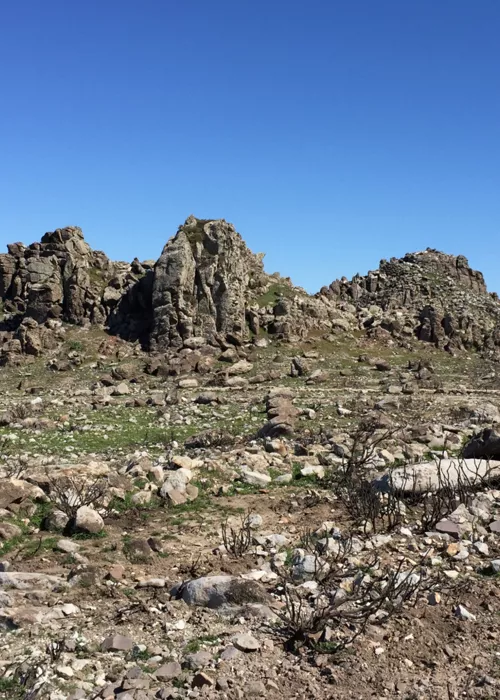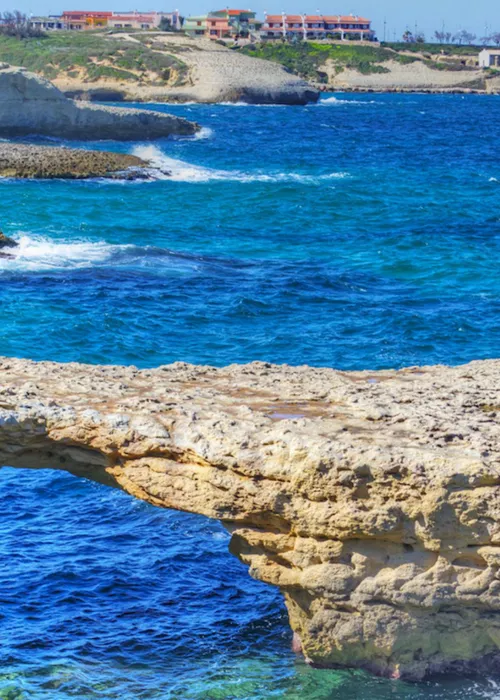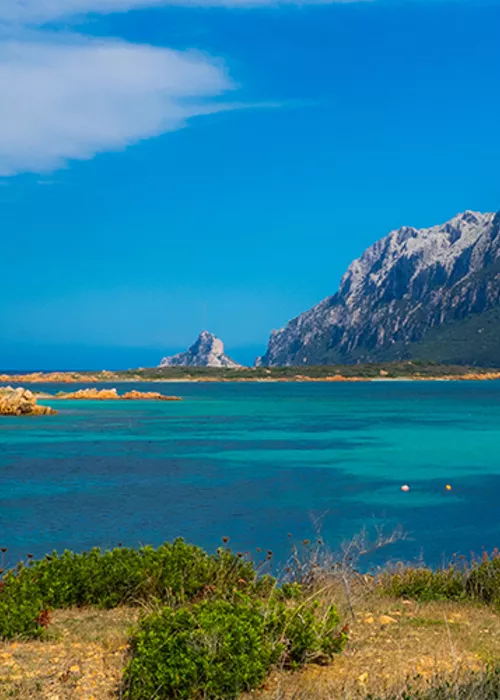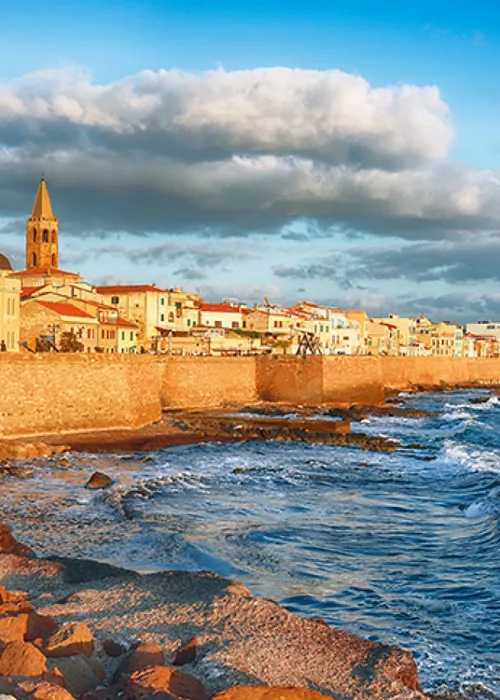Ulassai

Departing from Cagliari in the direction of Ulassai, travelling along the new state road 125, you get there in under two hours. If time is not an issue and hairpin bends are not a problem either, 'take' the old 125 considered a must by bikers, scenic and evocative, through forests and canyons before intercepting the fast track to Ulassai.
"I am a little goat longing for precipices", this is how Maria Lai perceived herself as a child walking in her mountains, she was already in a relationship with infinity where she would soon take her art of threads and words. Many of her works, often alienating, are at the Stazione dell'Arte museum, the others in the open air, everywhere, on cliffs, in squares, on walls and along paths leading out of the village, to the caves of su Marmuri, to the waterfalls of Lequarci, to the climbing routes. Ulassai is now a destination for climbers and trekkers who spend the night here or in the neighbouring village of Jerzu, but few knew of it when Maria Lai, a pioneer of relational art, created the first work "Legarsi alla Montagna" (Bonding with the Mountain). The avant-garde movement flocked here to celebrate its reach and Nivola gave the village the "Sound Fountain", which is located in the village's old public wash-house.
Orani

Waking up early to avoid missing the sunrise over the Ogliastra sea, breakfast and off we go, immediately, in the direction of Nuoro, a few dozen kilometres, and we hit the superhighway that in less than an hour takes us to the heart of Barbagia. Stop in Mamoiada, home of the Mamuthones: a visit to the museum of Mediterranean masks is a must. Back on the road, in the Barbagia region of Nuoro, we take a lunch break: in this area there is a choice of wine cellars, shepherds' cuisine and local fusion restaurants. In the afternoon, you reach Orani in a few minutes, the destination of the second stage and Nivola's village, in time to visit the museum dedicated to him. It is surprising to find oneself in a place of contemporary art with an international flavour, so beautiful in the rugged and superb environment of Barbagia. His works are collected here, a powerful mix of archaic and conceptual art in his sculptures and, in his visionary architect projects, the decades-long anticipation of a new interpretation of space that has set the standard. Leaving for New York at a very young age, he brought the themes of his culture into the buzz of the avant-garde of the time, one above all the archaic femininity of the Sardinian civilisation, impersonated with a few essential traits in his imposing sculptures of the Mother Goddess. Book early to find a place in Orani's 'diffuse' hospitality: here you can breathe in the atmosphere of the places of yesteryear. Alternatively, a few kilometres away is Nuoro.
San Sperate

While Nivola was being consecrated in the USA, Pinuccio Sciola began in his home town to listen to the stones: San Sperate is the next stop on the itinerary that will end in Cagliari. On the way, stop at km 114 of state road 131, descend the steps of the sacred well of Santa Cristina and walk around the nuragic village nearby, in these special places you will feel that the stones imprison energy and memory. Sciola started from this concept and began drilling them almost as if to release the sounds of wind, water and fire from the depths of the earth and the depths of the sea. He played them for the first time at Time in Jazz in Berchidda: they have been creating havoc in the art and music world ever since. Today they can be found in permanent installations, in Paris as in Rome, where Renzo Piano wanted a gigantic one for the City of Music. But the place where most of them are concentrated, is the Sound Gardens of San Sperate, a town-museum of diffuse art, which intrigues with its sonorous stones and entertains with more than 300 murals, signed by Sciola himself and by Sardinian and international artists, attracted to this small town a few kilometres from Cagliari. In San Sperate the walls speak and the stones make music that has the flavour of Sardinia.


